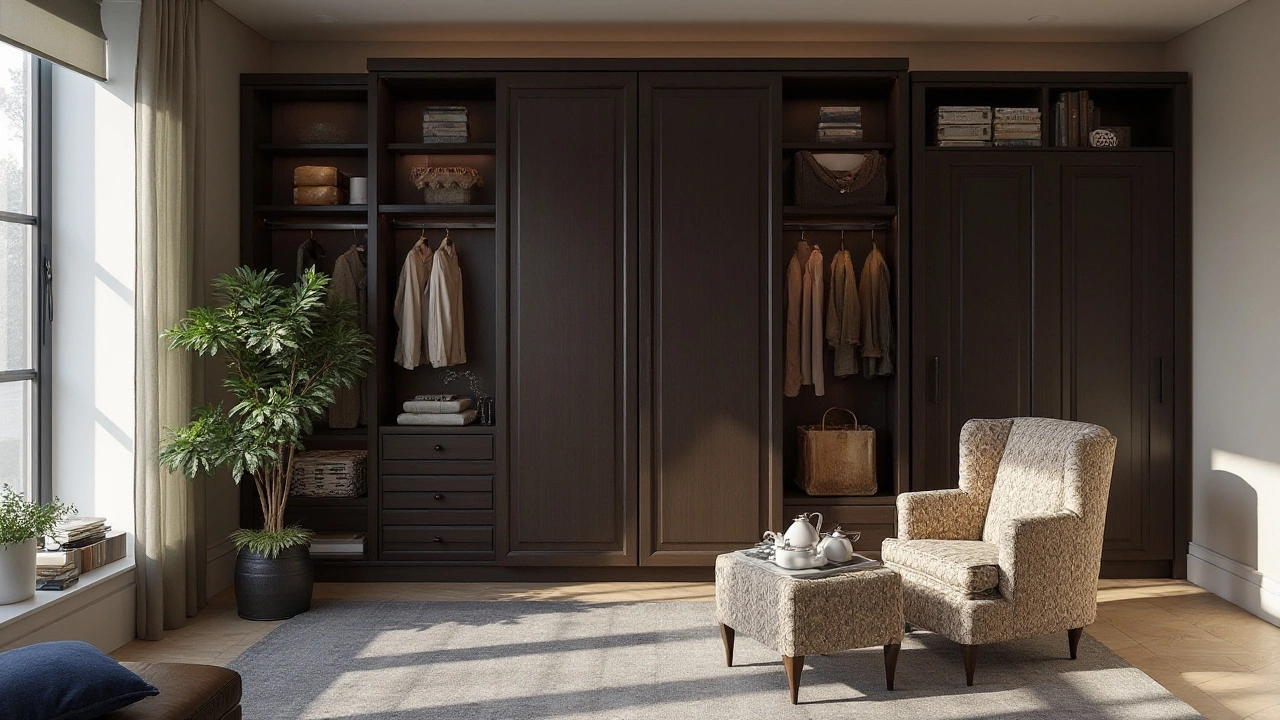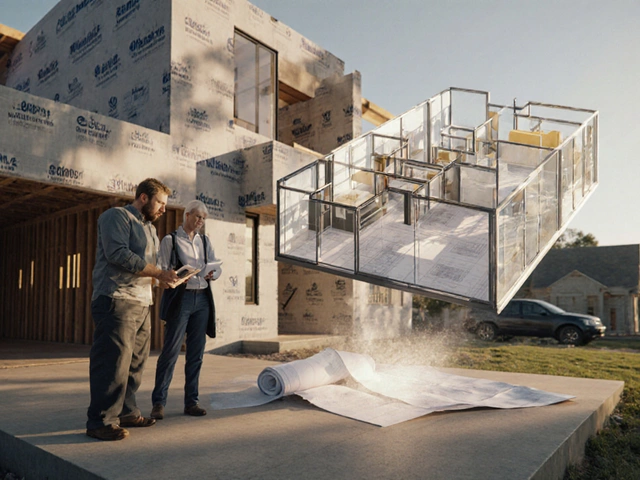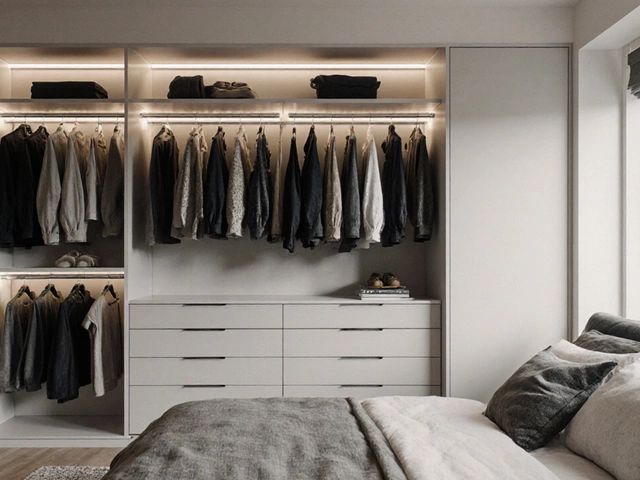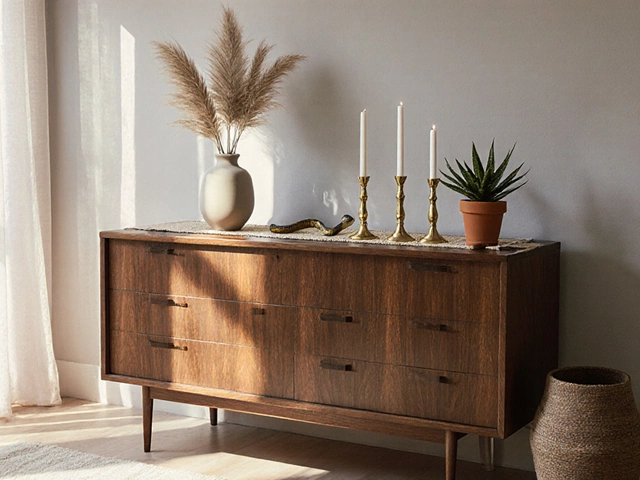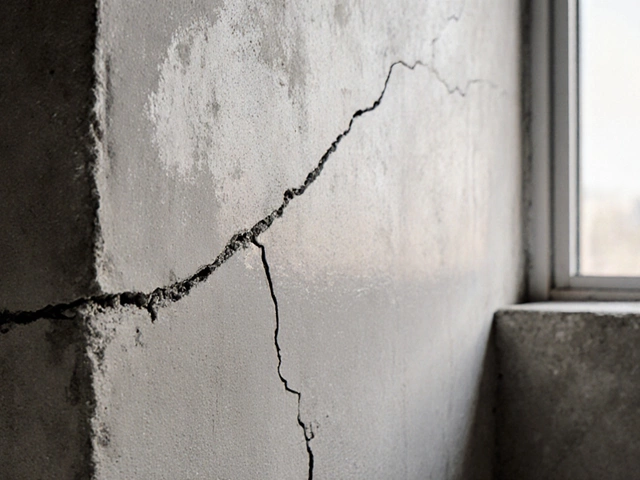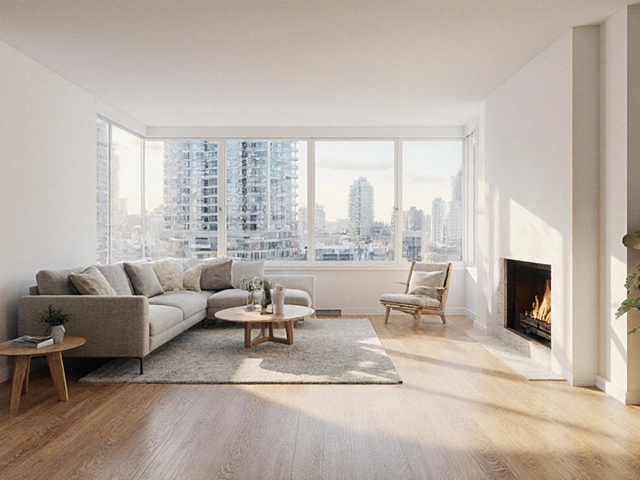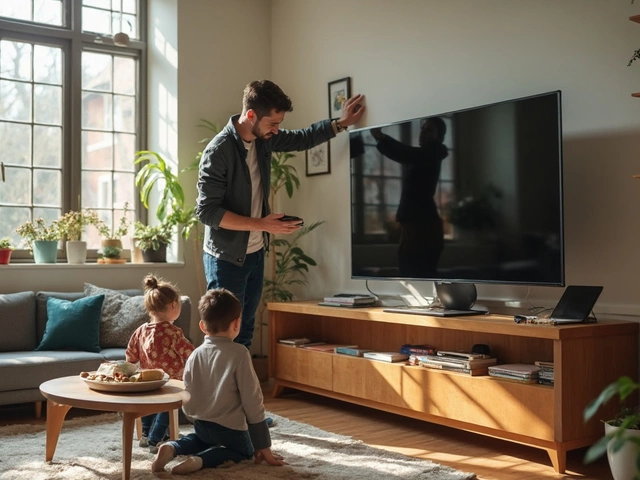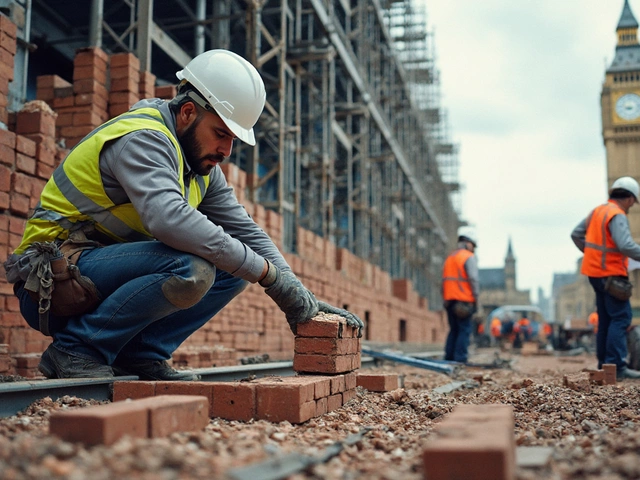In the quest for a clutter-free home, many people turn to fitted wardrobes as a go-to solution for organizing storage efficiently. These custom-built units maximize space, making them particularly appealing for those facing spatial limitations. Yet, while seamless integration into bedroom designs can be alluring, fitted wardrobes bring along potential drawbacks that might not be immediately clear.
Diving into the world of fitted wardrobes involves considering factors beyond aesthetics, such as how they might limit flexibility or rack up costs. Understanding these potential pitfalls is crucial for homeowners looking to make an informed decision, ensuring their choice aligns with both current needs and future plans.
- Lack of Flexibility
- High Installation Costs
- Impact on Home Resale Value
- Difficulties with Relocation
- Aesthetic and Fashion Concerns
Lack of Flexibility
When considering fitted wardrobes, one must acknowledge their inherent rigidity. These customized units are meticulously designed to fit specific spaces, which can be both their charm and their Achilles' heel. The bespoke nature means that once they're installed, altering their configuration or repurposing the space can be quite challenging. Unlike freestanding furniture, which can be moved and rearranged according to needs or whims, fitted wardrobes are more permanent fixtures. This permanence can be restrictive, especially for those who like to frequently revamp their living areas or might foresee changes in their household dynamics. Over time, as needs and tastes evolve, this rigidity can transform what was once a perfect solution into a burden.
The lack of flexibility extends beyond just spatial arrangements. When one's storage requirements change, adapting a fitted wardrobe can become complex and costly. For instance, consider a growing family where the demand for additional garments and accessories storage steadily increases. An inflexible wardrobe structure may not accommodate this growth without extensive modifications, potentially negating the initial investment. In contrast, standalone wardrobes can be easily replaced or supplemented with additional units. The inflexibility is a significant consideration, especially in an era where adaptability is highly prized.
The Guardian once noted, "In a world that's constantly changing, the allure of flexible living spaces is paramount. Custom-built solutions should incorporate future needs, offering adaptability and not just style."
Moreover, there is the aspect of spatial versatility. Fitted wardrobes, being tailored to specific rooms' dimensions, can restrict the options available for room functions. For example, a room that houses a fitted wardrobe might be locked into remaining a bedroom or a closet space long after the wardrobe's purpose has been outgrown or the room is needed for something entirely different. This kind of spatial rigidity demands forethought and planning far ahead. It contrasts sharply with more versatile furniture options, which offer greater liberty to reconceptualize spaces without the headache of demolition or reconstruction costs. Those craving the capability to swiftly transition a room from a nursery to an office or a guest room to a study might indeed find fitted wardrobes more cumbersome than convenient.
High Installation Costs
Deciding to install fitted wardrobes in your home is not just about carving out extra space; it’s a commitment to your wallet too. One of the initial hurdles many face is the hefty price tag attached to these custom creations. Unlike free-standing alternatives, fitted wardrobes require skilled craftsmanship to tailor them precisely to your room's dimensions, which significantly raises costs. This specialized labor isn't cheap, and the price often reflects the level of detail and perfection expected from such installations.
The materials chosen for the job can further inflate installation costs. Opting for high-end materials such as hardwoods or specialized finishes can drive the expense through the roof. While these might offer a longer lifespan and a touch of luxury, they don't come cheap, and for some, the costs outweigh the benefits. Even the simpler materials, when coupled with unique designs, can end up surprising homeowners with their final invoice. According to a survey by Property Division, homeowners can expect to spend between $2,000 to $5,000 on average for a standard fitted wardrobe installation, though these numbers can escalate quickly with customization options.
A significant amount of work goes into planning and executing these installations, from design consultations to precise measurements, which all play a part in the premium pricing. Professionals might need to make multiple visits to ensure every detail is perfect before construction begins. This step is critical because the process demands a meticulous approach to avoid costly errors – any mistake could mean additional materials or corrective work, adding unexpected expenses. An interesting point carried by Interior Design magazine highlights that "the precision required in fitted wardrobe installations is reflective of time and skill, something free-standing options simply bypass."
Interestingly, the high installation costs sometimes also include hidden fees. Components such as custom lighting, upgraded handles, and integrated technology features like charging stations can sneakily raise the total amount due. It's crucial for homeowners to read their quotes carefully and discuss every detail with the service provider to avoid surprises. These added costs are often forgotten in the conversation about wardrobe disadvantages, leaving some to wonder if they’ve bitten off more than they can chew once the bill arrives. With unexpected extras, some installations can nearly double in cost, shocking those who didn’t budget for incidentals.
While exploring alternatives might be a savvy move for the budget-conscious, one can't dismiss the allure of an impeccably designed, custom wardrobe that perfectly adapts to one’s space and needs. For those committed to the idea despite the costs, considering less expensive materials or more minimalist designs could be a way to keep the pocketbook balanced while still achieving a refined home environment. Balancing desires against practical financial constraints is key to ensuring satisfaction with such an investment, steering clear from future lamentation over expenses. Ultimately, patience, planning, and prioritization play pivotal roles in navigating the high-cost landscape of fitted wardrobes.

Impact on Home Resale Value
When considering home improvements, the question of resale value often looms large. The choice to install fitted wardrobes is no exception. While these custom storage solutions can be a delightful addition to your personal space, potential buyers may not always share your enthusiasm. Homes with built-in storage scrupulously designed to fit the needs and preferences of the current owners might not align with what future occupants seek. This lack of universal appeal can put a damper on prospective buyers' excitement, hence influencing the resale value of your home.
To better understand this, consider a scenario where an buyer desires a spacious bedroom with minimal built-in structures. A room dominated by non-removable, custom closets can be seen as a limitation rather than a feature. What’s more, rebuilding or removing these installations involves time, effort, and cost, which may dissuade some buyers entirely. This factor, combined with other potential disparities in taste, can turn a renovated space into a stumbling block during negotiations.
Moreover, even if prospective buyers admire the utility of fitted wardrobes, they might be hesitant because of the associated costs. Research from estate agencies frequently point out that the value added by fitted furniture isn’t always proportional to the original investment, particularly in volatile market conditions. A buyer’s emphasis might revolve around flexibility and versatility, hence the permanence of fitted wardrobes could make your property less attractive compared to homes with adaptable layouts.
“Permanent fixtures like fitted wardrobes can often put off buyers who prefer flexibility in their living space arrangements,” notes Alex Ellingworth, a renowned property expert. “It’s crucial to strike a balance that doesn’t overshadow the potential your space offers.”
It's essential to keep in mind that not every buyer will perceive fitted wardrobes as valuable, especially when there's a rise in popularity for homes that echo minimalism and simplicity. Individuals cherish the ability to configure their space as desired without the constraints of existing structures. These trends emphasize why it's important to weigh personal benefit against potential marketplace receptivity when planning major home adjustments.
Difficulties with Relocation
Fitted wardrobes, custom-tailored to the specifications of your unique space, can pose significant challenges when it comes to relocating. This bespoke nature is a double-edged sword. On one hand, it embodies the height of personalized home storage, but on the other, it ties your investment to the space itself. Imagine spending a small fortune on crafting the perfect storage solution only to realize that moving it to a new home could be technically impractical or financially unviable. These fixed installations are not typically designed with mobility in mind, making the act of relocation, quite literally, a tall order.
When evaluating the scenario from a practical standpoint, you will find that dismantling and reinstalling these fully integrated units can turn into a logistical nightmare. The dismantling process can compromise the wardrobe’s structural integrity, leading to potential damage and a decline in the fit and finish that made it appealing in the first place. Moreover, reinstallation in a new place might not match the original configuration, leaving you, and possibly new potential homebuyers, with a mismatched piece that doesn’t quite fit or function as expected.
High Installation Costs don’t end with the initial set-up; moving house could incur additional significant expenses. Homeowners may find themselves in a position where they have to invest in new wardrobes at their next property or switch to alternative storage options that better suit the new space and lifestyle. It's important to consider these potentially recurring costs when opting for fitted wardrobes, as these may become financially burdensome over time, especially when moving is frequent.
According to interior designer Jane K. Smith, “While fitted wardrobes offer unparalleled customization, it's vital for homeowners to view them as an investment in the property itself rather than something portable. Anticipating the need for adjustments and potential replacements down the line can save money and stress.”
In cases where relocation is a likely prospect, the initial allure of fitted wardrobes might beckon a pause. It's worth consulting with a professional on the feasibility and cost implications of moving such installations. Oftentimes, semi-fitted or modular storage solutions offer a compelling alternative, balancing permanence with flexibility, and allowing for easier transitions from one home to the next.
Ultimately, the decision to go with fitted wardrobes should be made with an eye for the future. Determining how often relocations might occur in your life, or perhaps in the foreseeable future of potential homebuyers, can influence whether this investment aligns with your long-term plans. Each decision carries its trade-offs, and understanding the potential difficulties with relocation is key to ensuring the fitted wardrobe dream doesn’t become a costly moving day dilemma.
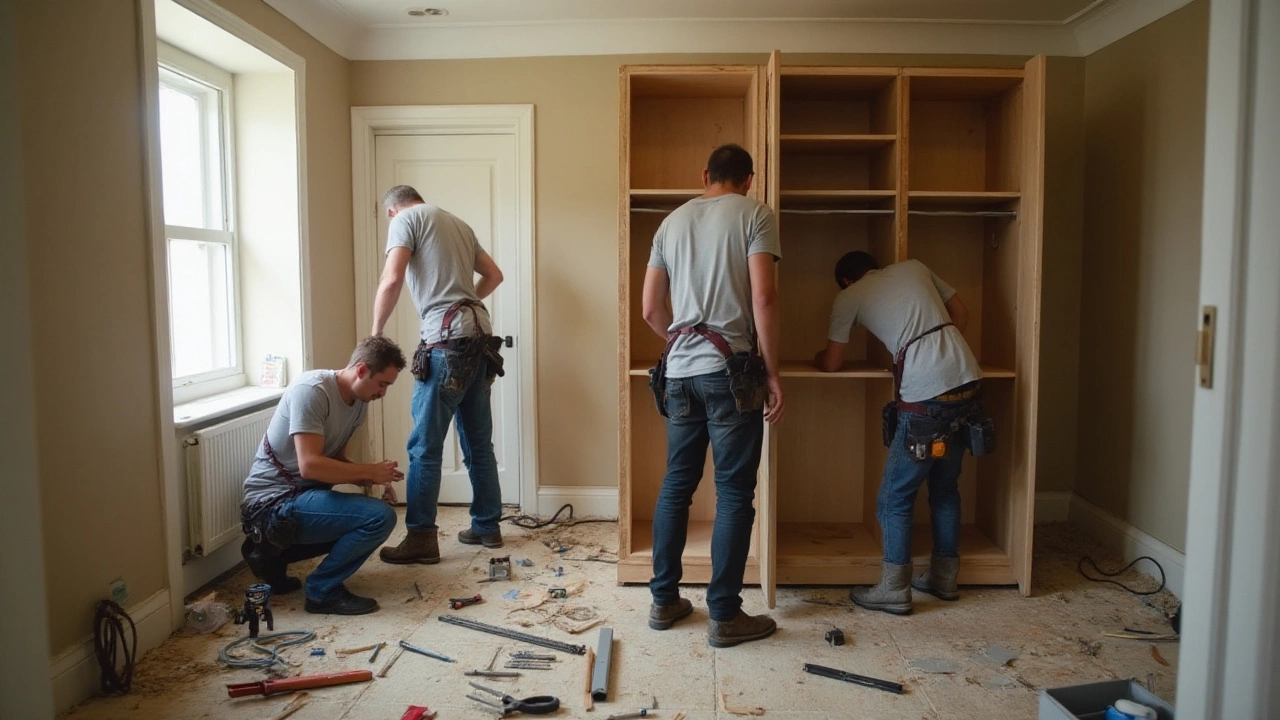
Aesthetic and Fashion Concerns
While fitted wardrobes bring a sleek and tailored look to any bedroom, they often lean heavily into contemporary designs, which might not suit everyone's taste or the architectural style of older homes. This tailored aesthetic can become a double-edged sword over time. A classic, minimalist wardrobe may seem like an excellent choice today, but as interior design trends evolve, what’s in vogue now might become obsolete. As trends shift towards more eclectic or vintage styles, a fitted wardrobe custom-built for a specific era could clash with future home renovations, leading to a mismatch between old and new design elements.
Another consideration is how personalized these wardrobes can be in terms of design features. Unlike free-standing units that can be easily swapped out, built-in wardrobes remain a permanent fixture once installed. This permanence means that homeowners need to think long-term. A neutral tone might match today's curtains or bedspread, but will it complement tomorrow's color palette? This becomes a daunting question to ponder, especially when fashion and design tastes can change faster than the seasons. As interior designer Jane Micheal once noted,
“A room’s aesthetic should have the freedom to evolve with its inhabitants, rather than being anchored by immovable design choices.”
Moreover, the integration of a fitted wardrobe must consider the purpose of the room and how it fits into the overall space. A wardrobe might cater perfectly to a couple sharing a room, offering divided sections and specific storage features like shoe racks or jewelry compartments. But should circumstances change – say, a child comes along – this configuration could become less functional. The lack of flexibility inherent in these setups means that changes in room function might require costly modifications or a complete overhaul.
In neighborhoods where the housing styles range from Victorian to ultra-modern, fitted wardrobes can also impact resale value. Potential buyers might be turned off by highly specific designs that don't match their vision for the space. Statistics have shown that about 20% of home buyers look to remodel within the first year of purchase, and built-in storage can often become part of that expense if it doesn't align with personal tastes. A compromise between function, fashion, and personal style is crucial for those considering resale in the near future, or even for those imagining long-term habitation.
Thus, while fitted wardrobes offer customized solutions, achieving harmony in decor without sacrificing resale value or personal style becomes an art in itself. The key lies in striking the delicate balance between bespoke utility and versatile beauty. By making informed choices and staying attuned to both current trends and timeless styles, homeowners can enjoy the best of both worlds: a wardrobe that enhances their space and aligns with their lifestyle.
